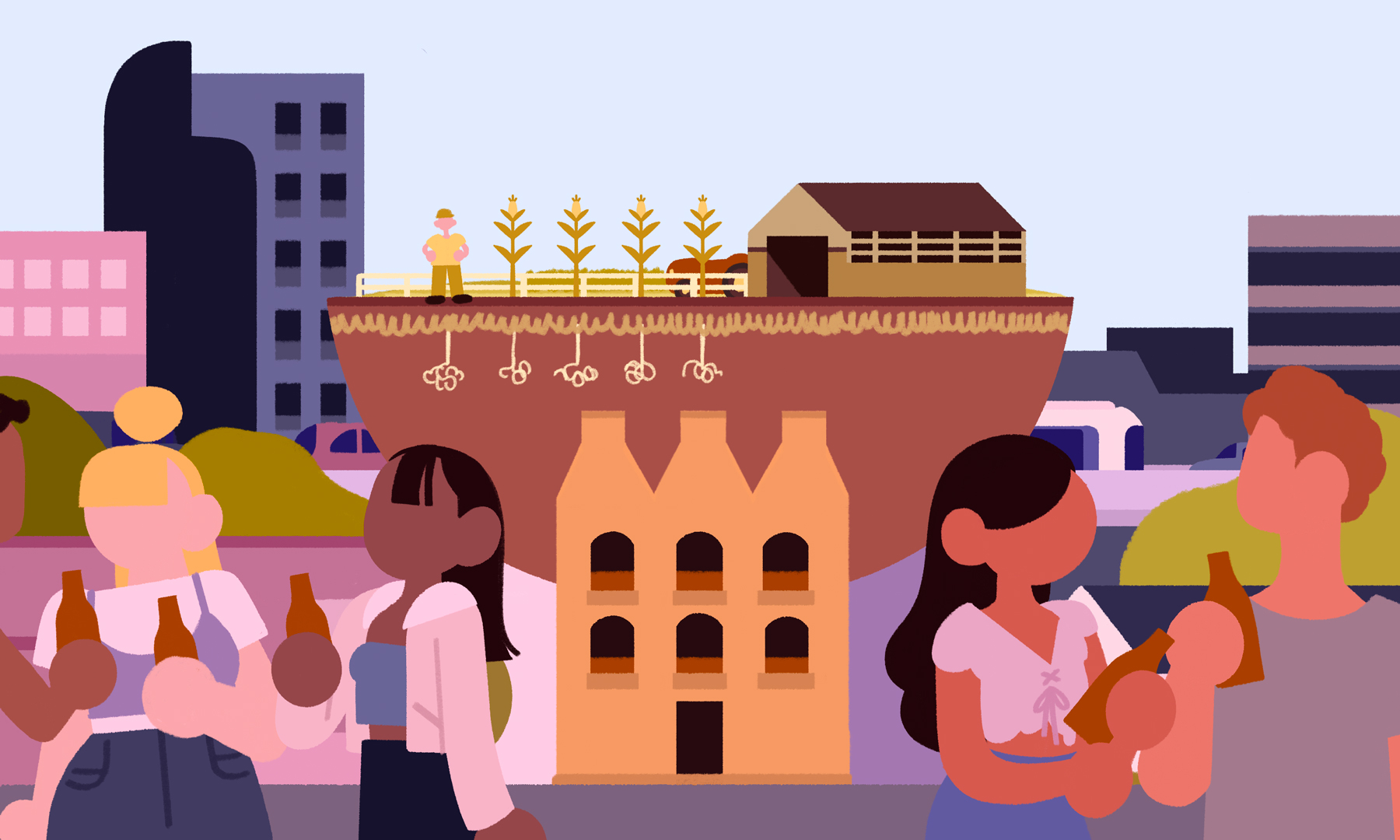
ILLUSTRATION BY SHIDEH GHANDEHARIZADEH / NEXTGENRADIO
The
Impact
of
Climate Change
In this project we are highlighting the experiences of people whose lives are being affected by climate change.
William Oster speaks with Todd Olander, a farmer and maltser in Loveland, CO. Olander wants people to know the turmoil he’s faced as mountain snowpack and weather patterns become less reliable resources to grow his barley that eventually becomes malt for beer. Through restorative agriculture, Olander hopes he can weather the effects of a changing climate and set an example for farmers across northern Colorado.
When the tap runs dry: investing in the soil for the future of quality beer
When the tap runs dry: investing in the soil to keep up the quality for beer
Click here for audio transcript
Todd Olander: I just want people to know where their food’s coming from. That’s my main concern.
My name is Todd Olander. I’m a farmer in Loveland, Colorado. I also have a Malthouse.
Finished malt is the main ingredient in beer and whiskey and just fermented beverages that everyone enjoys.
This land means a lot to me. My grandparents were the original owners of this land, Swedish immigrant family, moved to like the Boulder and Longmont area in the late 1800s. My family’s been in the area farming ever since.
This is where I spent most of my childhood up by the house over here, pretty much where the malthouse sits. My family built this malthouse in 2016, looking to diversify how we can grow crops, who we grow it for. So like we kind of created our own market that relies on people.
(Sound of a grain sorter)
I think that, uh, the main impacts that we’re seeing from climate change are less snowpack, less water to be used for irrigation. Lots of higher temps — for multiple days, multiple weeks — and then lack of rainfall or huge rainfall events where a lot of it just runs off the field.
There’s like a series of probably 13 reservoirs that we get our water from. There’s been a large impact on one of the water systems that we use this year. It’s called the handy ditch system. Typically we get eight acre feet per share. This year they issued one and now they’re up to two now cuz we’ve got some rain events. That’s a quarter of the water that we would normally have available to us.
There’s only certain levels of protein that you can go to and that comes from stress, so if you get more stress and like, which usually comes from lack of water then you’re gonna have higher protein levels in your grain and then higher protein levels are not acceptable in the malting industry. We had to actually reject about, oh, 150 of the 550 acres that we planted this year because of the high stress and, and the higher protein content that came off the field.
We planted the barley crop in February, so we raced against time cuz there was a snowstorm coming to get it seeded in time. Then we ended up with a wind event and almost killed the grain.
It’s been 90 days of like ups and downs of like, are we actually gonna have a crop to make malt so that you guys can have beer? You know? And that’s happening throughout the United States, like all beer is coming from barley.
(Sound of machine sifting grain)
A lot of our customers see the importance of local grain and knowing where their grain comes from and it just like connects them to the farm and they know where their raw ingredients come from. I mean, that’s part of what that field day is that we throw every year. And our anniversary party is to actually have people come and see where their grain is being grown and see how it’s harvested and see what actually goes into the whole operation.
I, I have mixed feelings about the future. I mean environmental impacts are definitely going to affect us in the future, but like I said, we’re taking as many steps as possible as quickly as possible to hopefully mitigate some of those challenges that we see moving forward.
I think there’s still an opportunity to have open spaces in this area that are making an impact on the rest of Colorado and hopefully educating people that, like, agriculture’s important and food is important and obviously beer is important as well. (Todd laughs)
Todd Olander wants his fellow farmers to be worried.
A corn and barley farmer in Loveland, Olander hears farmers across northern Colorado brush off concerns about rising heat and less predictable weather patterns. Olander’s own father doesn’t believe the climate is changing, arguing it’s purely “cyclical.”
But Olander is already seeing ways a warmer and drier climate is cracking the foundation of traditional farming. This past April and May, the two months where he and other farmers in this region rely most on rain and snow, ended up being among some of the driest on record, accruing just barely two inches of precipitation. Olander also relies on the Rocky Mountain snowpack that comes downstream and into reservoirs to water his crops. But that too has become less reliable.
“There’s 13 reservoirs we get our water from,” he said. “Typically we get eight acre feet per share. This year they issued one. That’s a big impact on what we usually use.”
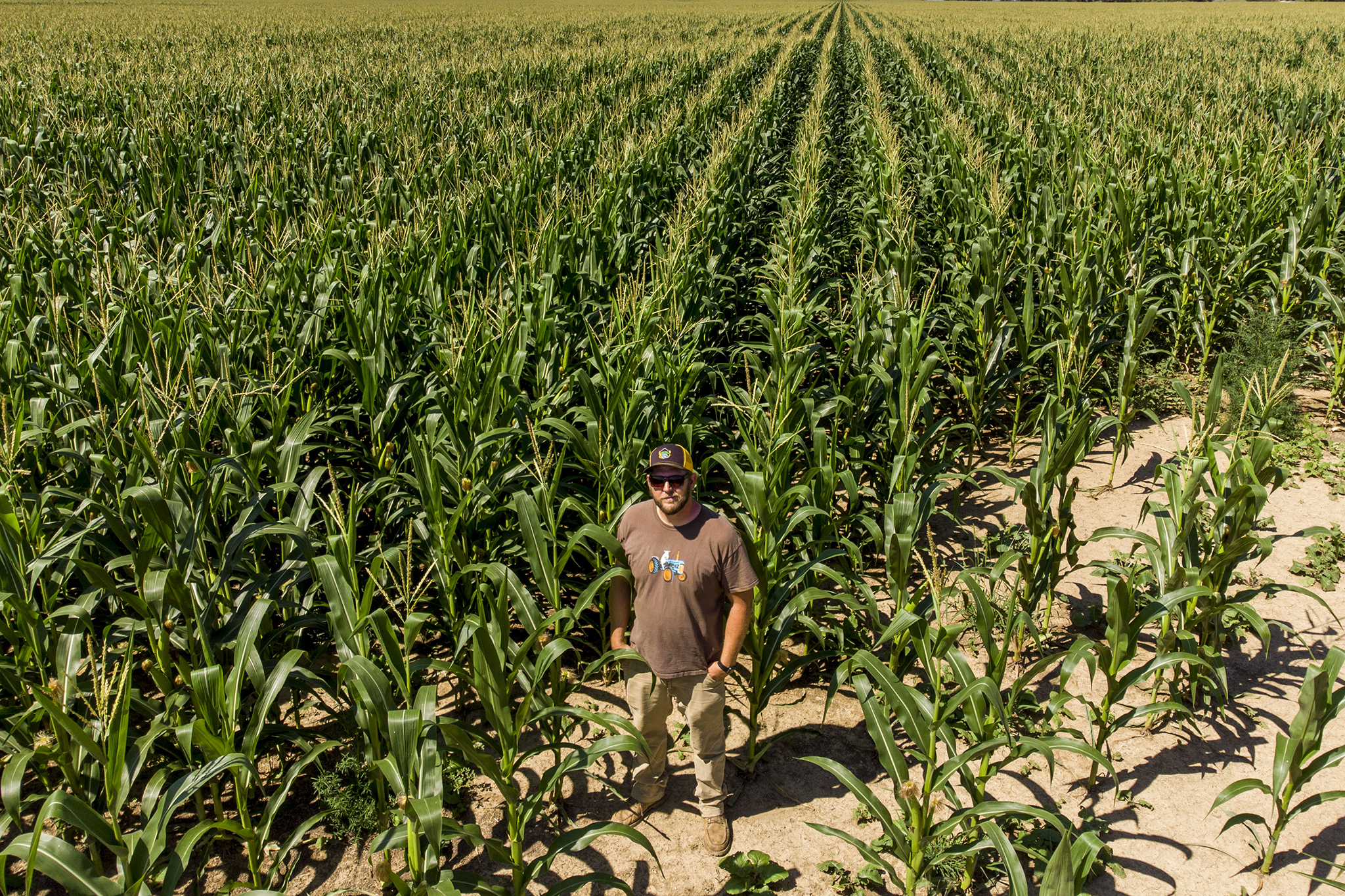
Todd Olander stands in a cornfield. It’s part of thousands of acres that make up his family farm.
WILLIAM OSTER / NEXTGENRADIO
Six years ago, Olander built a malthouse on his family farm to give him more control over what becomes of the barley he grows. Malting is a process of preparing grains to be used in brewing and distilling. But that business has come with its own challenges.
Of the 550 acres of barley planted, when it was time to harvest in early August 2022, Olander had to throw away 150, more than a quarter, because its protein levels were too high for malting. Less water during the growing season was at fault.
This is a tough loss for Olander. As a fifth generation farmer, he has a deep understanding of the soil he works on, learning how to farm from his grandfather.
“This is where I spent most of my childhood,” he said. “We had a sweet corn patch, a you-pick-it green bean patch — that’s how we made our money throughout the summer.”
But Olander has a plan — several, in fact. Through regenerative agriculture, he’s preparing to fortify his land against the worst of climate change, and rely on less water. He hopes these moves are just temporary, but he’s prepared for them to become his new normal.
“There’s steps we can take,” he said. “We might as well take steps to make things better for the future.”
Restorative agriculture is a farming practice that aims to regenerate soil and keep it healthy during off seasons. Olander is trying his hand at cover cropping. Cover cropping involves planting vegetables like radishes and peas that will reintroduce nitrogen back into the soil that corn and barley soak up as they grow. This process helps to revitalize the soil during the off season so that once planting begins, barley and corn will have the exact conditions they need to flourish.
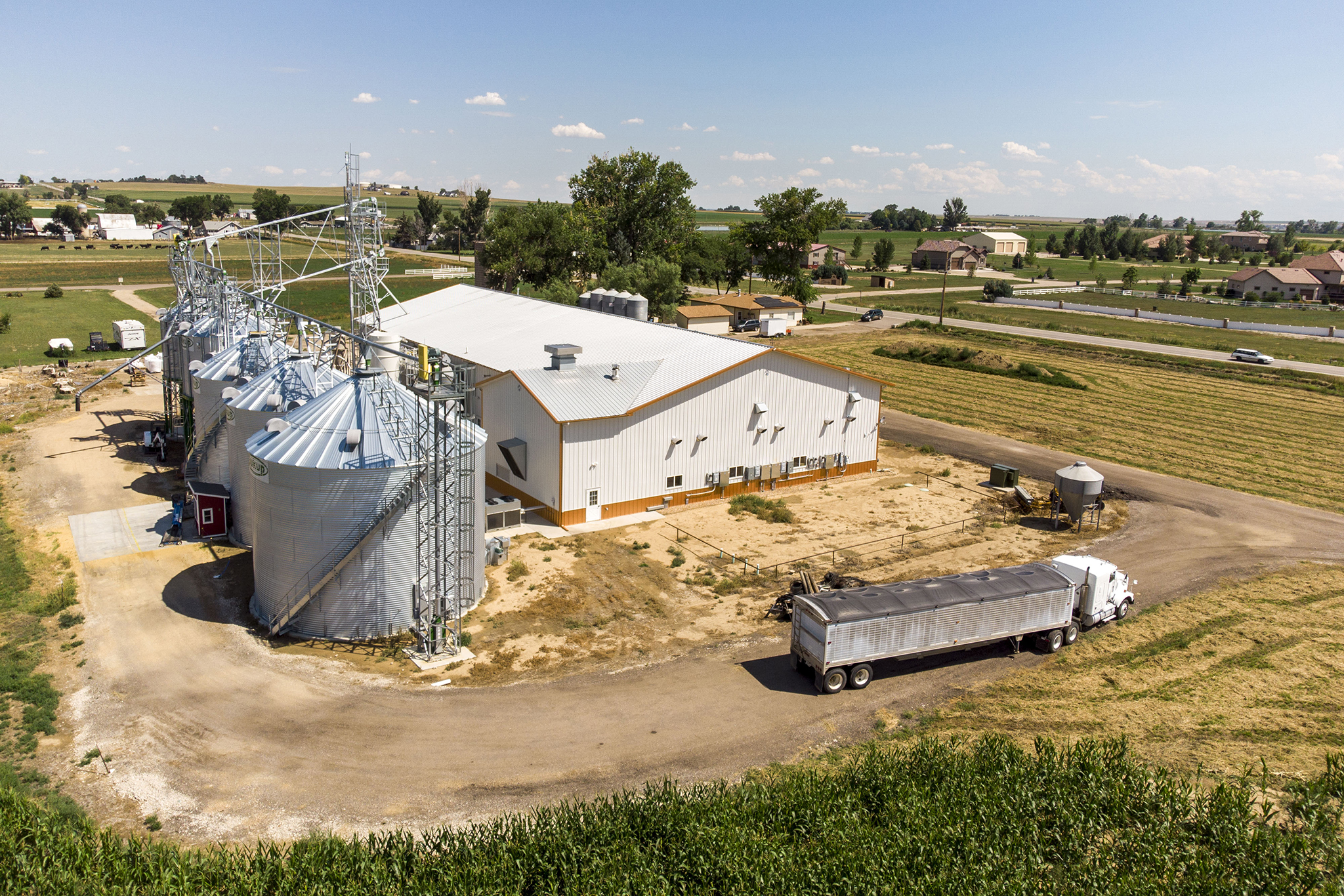
An aerial view of Root Shoot Malting. Olander founded the malthouse in August 2016 with his family and recently celebrated its sixth anniversary.
WILLIAM OSTER / NEXTGENRADIO
“People think that you’re using the moisture that you could be using for your cash crop on a cover crop instead,” said Olander. “But it kind of has [the] opposite effect because if you’re keeping the ground shaded you have the ability to kind of not have it exposed to a hundred degree weather.”

In between stalks of corn, budding cover crops begin to take root. Olander hopes this method of restorative agriculture will keep his soil healthy throughout the year. Aug. 8, 2022.
WILLIAM OSTER / NEXTGENRADIO
While Olander believes in the necessity of adapting to climate change, he sees other farms across Loveland and Northern Colorado shrugging off these concerns.
“There’s not a very big urgency at this point. They haven’t seen the struggles yet,” he said. “[But] something drastic happening that’s going to affect their farm — we’re on the verge of that.”
Olander is hoping that with his new systems in place, nearby farmers see how this works and follow suit. He also wants consumers to understand the extent farmers will go to to craft high quality beer.
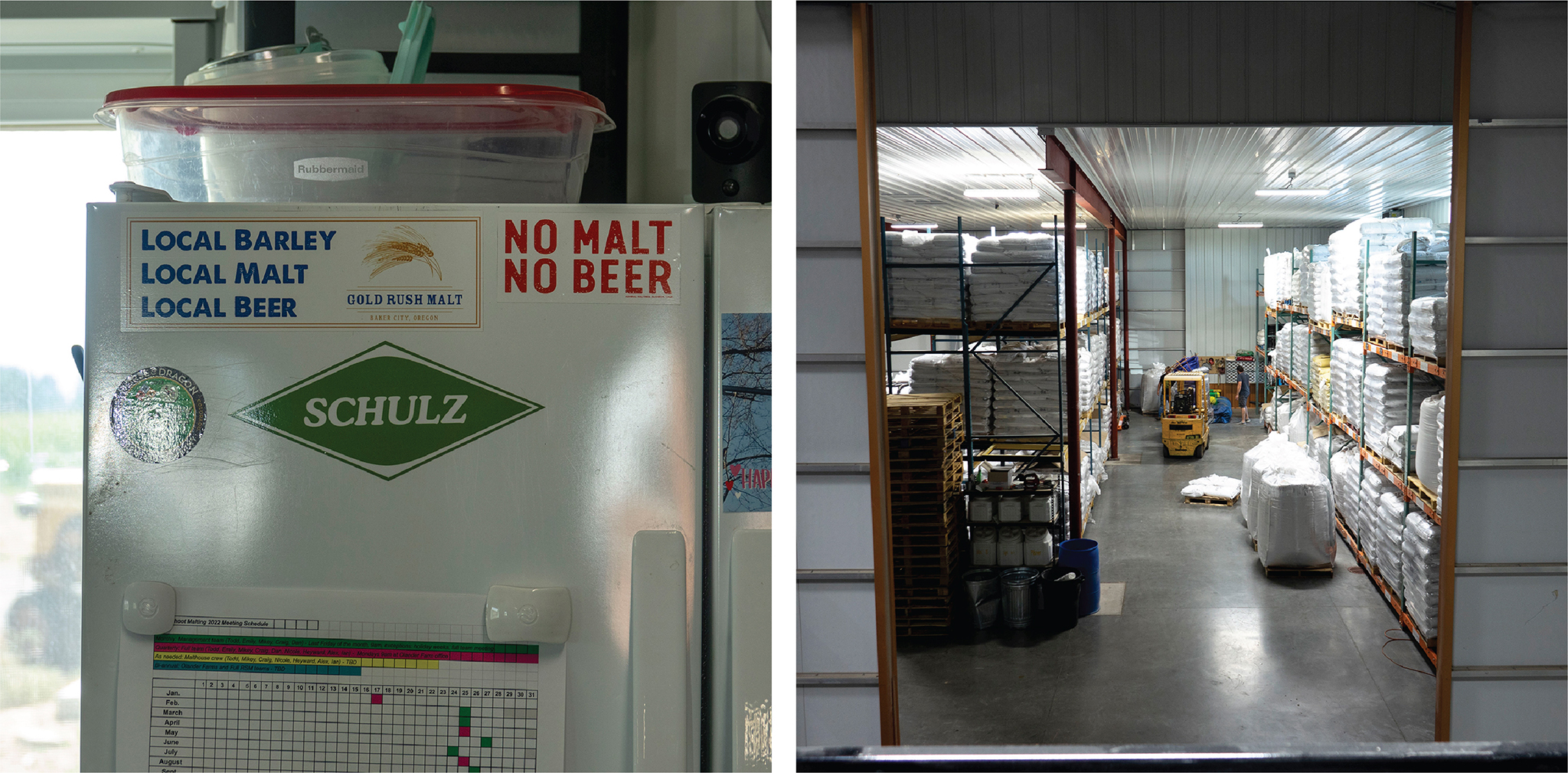
(Left) Root Shoot Malting was founded in 2016 and now supplies breweries and distilleries in several states. (Right) Stacks of malt packaged and ready to be shipped to brewery and distillery customers.
WILLIAM OSTER / NEXTGENRADIO
He reaches the public in part through a humorous social media presence, sharing behind-the-scenes moments of him and his team working on the field and dancing on tractors with four thousand followers on Instagram and hundreds on Twitter.
And just last Friday, Olander celebrated the sixth anniversary for his malting company, Root Shoot Malting, inviting brewers, distillers, and industry partners to celebrate a successful harvest season.
“I think there’s still an opportunity to have open spaces in this area that are making an impact on the rest of Colorado and educating people,” he said. “Agriculture is important and food is important. And obviously beer is important as well.”
#Wheat and the #WheatShortage have been in the news a lot lately. Read here to learn a little more about how the current wheat situation came about and what we are doing with wheat on #OlanderFarms! https://t.co/i2JpmVQwdf
— Root Shoot Malting (@rootshootmalt) June 6, 2022
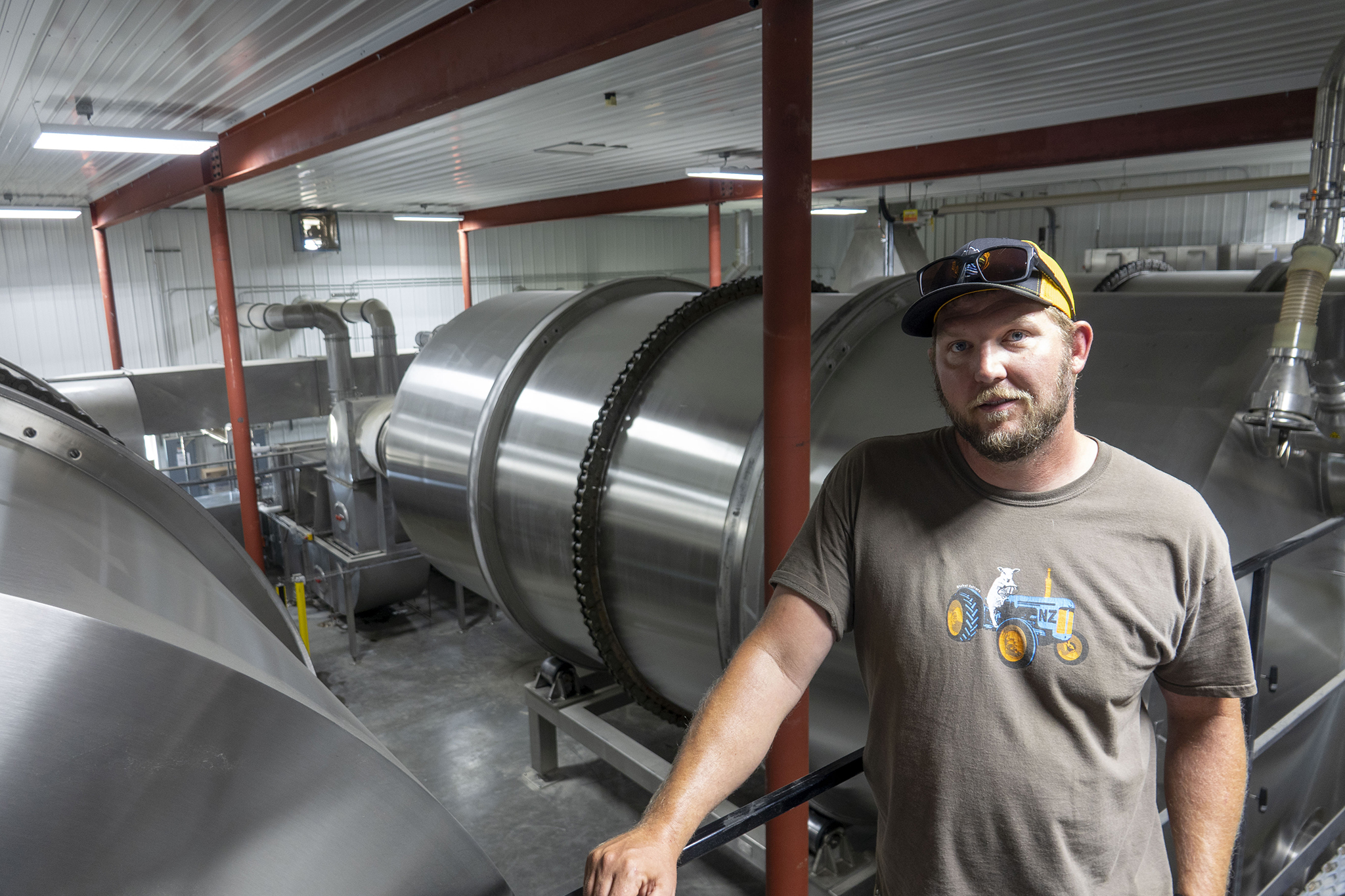
Todd Olander standing above barrels of barley being processed in the malthouse.
WILLIAM OSTER / NEXTGENRADIO
Despite all his worries, Olander tries to remain positive about the future.
“I think we can make enough changes and hopefully agriculture can have a huge impact on [combatting] climate change,” he said. “I think there’s still hope here that [we] can make a huge difference and either slow down or reverse it. It’d be my hope.”
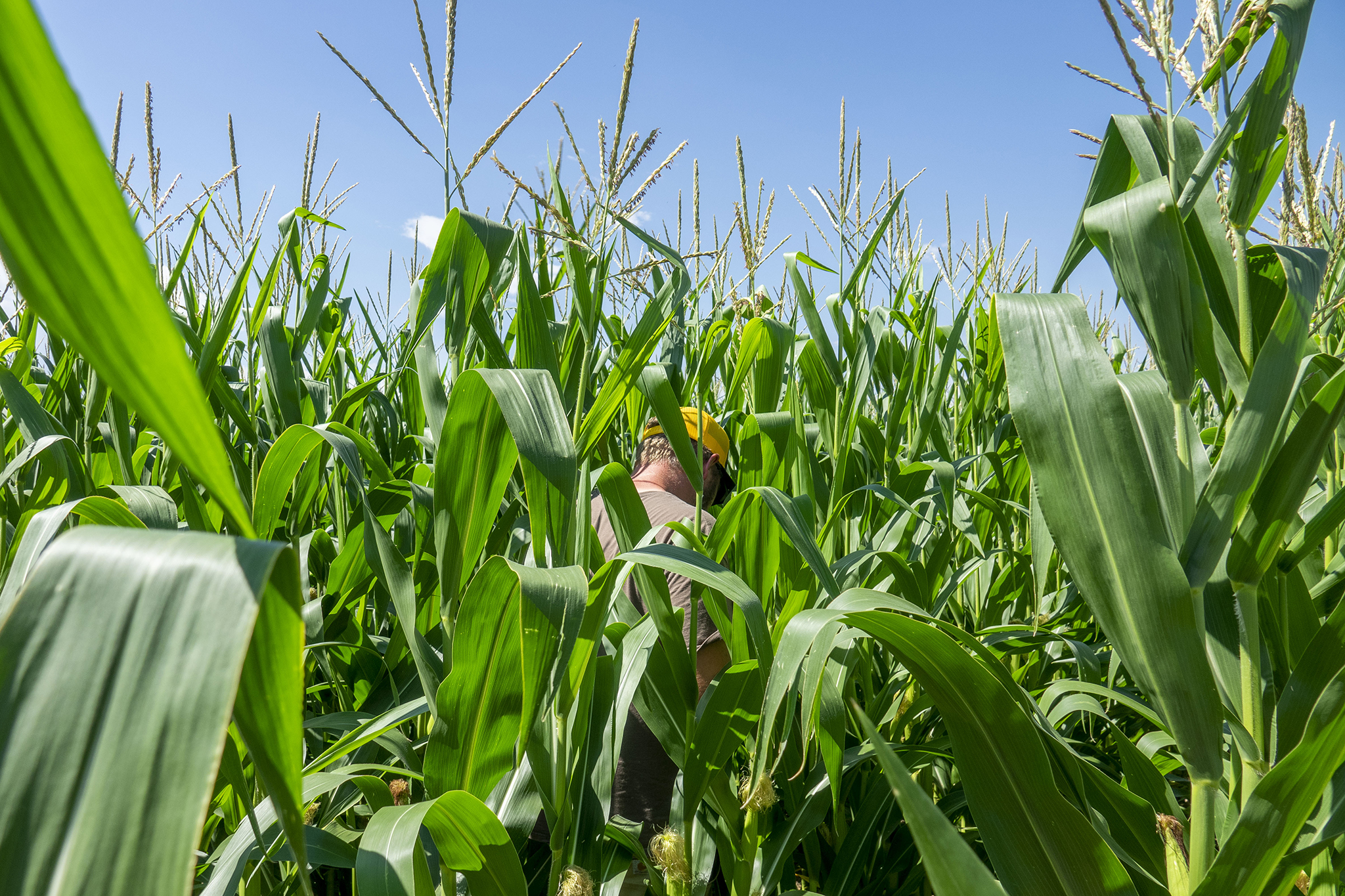
Todd Olander walks through rows of corn he’s grown that’ll be harvested next season.
WILLIAM OSTER / NEXTGENRADIO